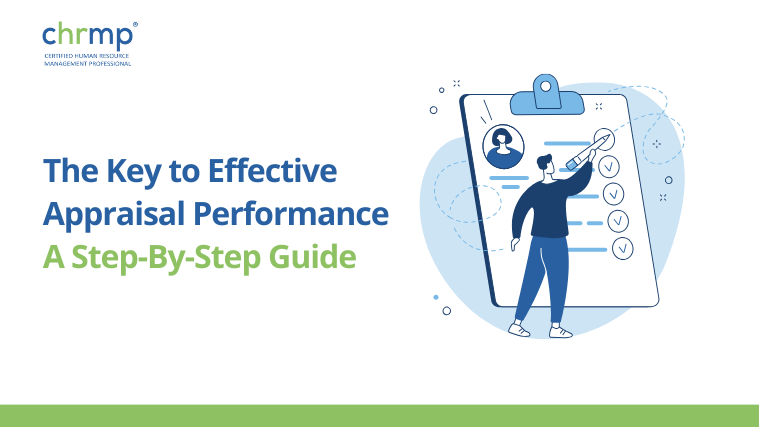

The span of control is a vital aspect of managing an organisation, and understanding it can help your company operate smoothly and at maximum efficiency.
In this blog, we shall look at the definition, importance, influencing factors, formula and other relevant details, including practical tips to help you determine a span of control for your company.
So whether you’re a well-seasoned HR manager or just someone with a keen interest in management topics, this blog is for you!
So get ready to upgrade your management skills and learn more about the span of control in HRM.
Let’s get started!
The span of control is a key concept in organisational management and refers to the number of subordinates that can effectively be managed and overseen by one manager. It varies in different organisations depending on the size and complexity and the specific responsibilities undertaken by the manager.
The span of control can greatly affect a company’s efficiency and productivity as it impacts key areas like the level of supervision, decision-making and communication within the organisation.
A suitable span leads to increased efficiency and employee autonomy, better assignment of tasks and judicious use of the company’s resources.
In contrast, an inappropriate span negatively impacts the company and leads to overworked managers, breakdown of communication, decreased employee engagement and productivity, and inefficient decision-making.
Hence, it is highly important to determine an appropriate span by carefully considering the organisation’s needs based on its size, management style and goals.
1.Narrow Span of Control: In hierarchical organizations, a manager having small number of subordinates who need close supervision and detailed guidance, suitable for complex tasks, has a narrow span of control.
2. Wide Span of Control: Where a larger number of subordinates report to a single manager who relies on delegation and empowerment, it’s called wide span of control and is more suitable for decentralized organizations and simpler tasks.
3. Centralized Span of Control: Decision-making and authority are centralised at the top, with managers at higher levels controlling fewer subordinates; common in organizations with a few top-level executives.
4. Decentralized Span of Control: Decision-making and authority are not concentrated at the center but distributed across different levels, with managers at lower levels having a wider span, which allows for more autonomy and empowerment to rest with them, within the organization.
The span of control is a critical aspect of running an organisation as it determines how many subordinates a manager can oversee and manage efficiently. It significantly impacts the level of supervision, decision-making and communication within the company.
A company must determine a suitable span as it is essential for effective management. If it is too narrow, managers become overburdened by having too many employees to manage. This leads to a lack of focus on important tasks, micromanagement and insufficiency.
On the other hand, if the span is too wide, managers can become too uninvolved with each employee, leading to inefficient communication and a lack of direction and feedback.
An inappropriate span can lead to demotivated employees and decreased employee engagement due to a lack of feedback and adequate attention.
The formula for calculating the span of control in an organisation calculates the ratio of employees to managers based on the number of employees efficiently managed by each supervisor.
The formula for calculating is expressed as follows:
The span of control = total number of subordinates/total number of managers or supervisors in the company.
For example, if a company has 500 employees and 20 managers, then the span for that company will be:
Span of control = 500/20 = 25
This means that each supervisor or manager in the company is responsible for managing 25 employees.
However, it’s worth noting that the formula for calculating the span is meant to be followed as a guideline instead of a rule.
An appropriate span can vary depending on the circumstances of the company and its managerial capabilities.
Other factors, including workload, employee skill and experience levels and communication systems, can also impact the company’s span.
Companies should use this formula as a base for determining a suitable span but should also consider other relevant factors before making a final decision.
Many factors can influence the span of control in an organisation. Here are some of them:
1. Nature of the work: The nature of the work being performed can influence the span of control. For example, routine and less complex tasks allow for a wider span, while complex and technical tasks need a narrow one.
2. Skill and experience levels of employees: Employee skills and experience also impact the span of control. Highly skilled and experienced employees do not require a lot of oversight and guidance, reading to a wider span and vice versa.
3. Style of management: The management style can also affect the span of control in organisations. A distinctive, hands-on managerial style might require a narrow span of control compared to a more delegative managerial style that needs a wider span of control.
4. Culture of the organisation: Organisational culture also influences spans of control in companies. A culture that promotes close supervision and scrutinised management needs a narrower span of control, while an organisational culture that values autonomy may require a wider span of control.
5. Organisational structure: The structure of the organisation can impact the appropriate span. A flatter organisational structure with fewer levels of management may allow for a wider span of control, while a more hierarchical structure may require a narrower one.
6. Communication technology: The rise of new kinds of communication tech has greatly influenced spans of control in organisations. Advances in communication tech have made it easier for managers and supervisors to communicate with and oversee a larger number of employees.
In conclusion, many factors influence a company’s span of control. These factors may include the nature of work, organisational culture, organisational structure, employee skill and experience, communication technology, etc. Understanding these factors is key to determining an appropriate span for your organisation and effective organisational management.
To determine an appropriate span of control for your organisation, carefully considering several influencing factors is required.
Here are some tips you can use to determine a suitable span for your company:
1. Identify your company’s goals: The first step in determining an appropriate span of control is understanding the goals and objectives of your company. The size of your company and the nature of your work must also be considered.
2. Assess the complexity of the work: Complex, technical tasks require more supervision. On the other hand, routine tasks require less supervision, thus allowing a wider span. Hence, you must evaluate the complexity of the tasks being performed to determine an appropriate span.
3. Evaluate employee skill levels: Employee skill and experience levels also play a crucial role in helping you determine an appropriate span for your organisation. Less skilled and inexperienced employees require more scrutiny, and vice versa.
4. Assess the managerial style: Evaluate the managerial style of your supervisors and managers. A hands-on, directive style may require a narrower span, while a more delegative style may allow for a wider one.
5. Consider the organisational structure: Examine the structure of your organisation to determine how many levels of management are in place. A flatter organisational structure may allow for a wider span, while a more hierarchical structure may require a narrower one.
6. Evaluate communication technology: Assess how communication technology is being used within your organisation. Advances in technology may allow managers to supervise larger teams remotely, which can widen the span.
7. Determine an appropriate span of control: Once you have evaluated all relevant factors, determine an appropriate span for your organisation. Use the span of control formula as a guideline, but also consider other relevant factors before making a final decision.
In conclusion, determining the appropriate span for your company requires careful consideration of several factors, includingyour organisation’s goalsn, the complexity of the work being performed, employee skill levels, managerial style, organisational structure, and communication technology. By considering these factors, you can determine an appropriate span that will help ensure effective management and optimal employee productivity.
1. What is an ideal span of control?
The ideal span depends on several factors, including the size and complexity of the organisation, the nature of the work being performed, and the supervisor’s managerial style. However, most experts suggest that around 6-8 employees per manager is ideal.
2. Can a span of control be too wide or too narrow?
Yes, a control span can be too wide or too narrow. One that is too wide may result in managers being stretched too thin, leading to poor oversight and communication breakdowns. On the other hand, one that is too narrow may result in unnecessary layers of management and increased costs.
3. What factors should be considered when determining an appropriate span of control?
Several factors should be considered when determining an appropriate span, including the complexity of the work, employee skill levels, managerial style, organisational structure, and communication technology.
4. Does the span of control vary by industry?
Yes, the appropriate span can vary by industry. For example, in industries that require highly skilled or specialised employees, a narrower span may be appropriate to ensure effective oversight and guidance. In contrast, a wider span may be appropriate in industries with more routine tasks and less complex work.
5. Can the span of control change over time?
Yes, the appropriate span of control can change over time. As organisations grow and evolve, the work’s complexity may increase, which may require a narrower span of control. Conversely, as technology and communication methods improve, the control span may widen. It is important to regularly reassess the span of control to ensure that it remains appropriate for the organisation’s needs.
In conclusion, a span of control is a critical concept in managing a company and refers to the number of employees that a manager or supervisor can effectively manage.
There are several factors that must be taken into consideration in order to determine an appropriate span for your company. These factors include the complexity of work, organisational structure and culture, employee skill levels, etc.
While there is no one-size-fits-all method to determine an appropriate span, experts believe that 6-8 employees per manager are ideal.
A carefully determined span of control is essential for effective oversight, communication, decision-making and increasing the overall productivity and efficiency of the workforce.

Grab Your 25 Free Email Templates Now